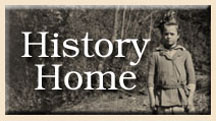

Recreation in the Pi Beta Phi Era: Page 2
Important as they were, however, organized sports and physical education represented only a small portion of the settlement school’s recreational offerings. The fraternity also staged plays, choral shows, and holiday celebrations at the settlement school; hosted an annual school fair; and maintained a lending library so that students and their parents might have access to books. Still, there were two events that eclipsed all others in popularity: “Pi Beta Phi movie nights” and the Gatlinburg “Old Timers’ Day” celebration.
The first motion picture to be screened in Gatlinburg took place on the evening of March 31, 1923, in the loft of the Red Barn. Those fortunate enough to attend gathered hay bales, chairs, and benches around a small projector donated to the school by the Pi Beta Phi Alumnae Club of Indiana, and then stared in amazement as the movie flickered and danced across a nearby wall. Needless to say, word of the event spread rapidly up and down the creeks, until it reached even the most isolated homesteads. When the settlement school screened the same films the following night, the loft was filled to capacity with curious onlookers. “I find that movies are going to mean a social time” wrote Head Resident Evelyn Bishop happily. “Aunt Lizzie [Reagan] had seen all the pictures Friday but Saturday night went again and came back with word she had visited folks she hadn’t seen for years. Whole families walked anywhere from one to six miles that night.” So popular were the Pi Beta Phi movie nights that the settlement school began holding them twice a week, April through October. Until Squire Isaac L. Maples built a small theater on his property in the mid-1940s, the Red Barn was the only place in Gatlinburg where one could watch movies.
“Old Timers’ Day” was introduced to Gatlinburg by Settlement School Nurse Phyllis Higinbotham. Having grown up in the ranching country of western Canada, and having taken a special interest in preserving the unique culture of Southern Appalachia, Higinbotham proposed that the settlement school stage an annual heritage festival in Gatlinburg that copied the format and feel of the frontier “round-ups” that she had attended as a child. Evelyn Bishop heeded her advice, and in the summer of 1921, the tradition of “Old Timers’ Day” was born. Like the husking bees of old, and the basketball games and movie nights of the Pi Beta Phi era, Old Timers’ day succeeded not only because it was fun, but because it provided isolated mountain families with an opportunity to gather in one place and renew old friendships. More importantly, a series of contests such as rifle-shooting, quilt-making, vegetable canning, among others, allowed residents to pit their “mountaineer” skills against one another, thereby reinforcing traditional Southern Appalachian cultural norms.
Of course, to conclude this essay without mentioning Pi Beta Phi’s handicrafts programs would be remiss; for although the fraternity treated arts and crafts production as a business, everyone involved, from the instructors down to the craftspeople themselves, recognized the intense personal satisfaction and exceeding joy that arose from the simple process of working with one’s hands. For a detailed study of the settlement school’s handicrafts program -- one which explores both its recreational and economic value -- please see the essay titled “Arrowcraft.”
| <<< Page 1 | Page
2 |
 |
|